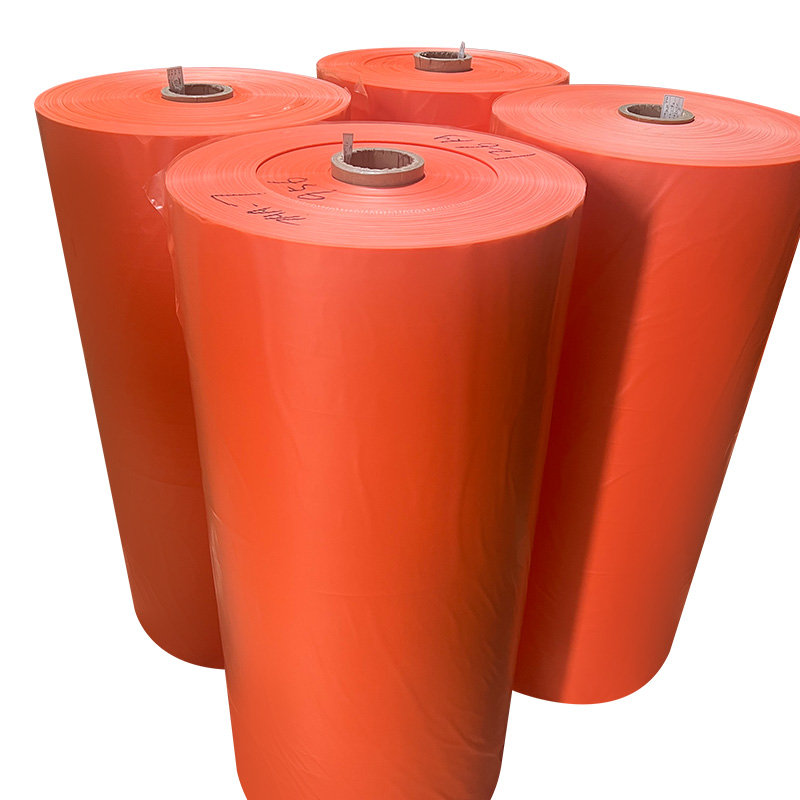There are two main types of polyethylene film, each with distinct properties: low-density polyethylene (LDPE) and high-density polyethylene (HDPE). Their thickness, measured in mils or microns, plays a key role in determining their applications. Here's a breakdown:
1. Low-Density Polyethylene (LDPE) Film
Characteristics: LDPE is known for its flexibility, transparency, and resilience. It has a lower density and more branched molecular structure, which makes it softer and more stretchable.
Thickness Range: Typically ranges from 0.5 to 10 mils.
Applications Based on Thickness:
Thin LDPE film (0.5 to 2 mils): Used for food wraps, grocery bags, and packaging film. These thinner films are flexible and lightweight but still offer good moisture resistance.
Medium thickness LDPE film (2 to 4 mils): Commonly used for shrink wrap, trash bags, and garment bags. They balance flexibility with increased durability.
Thicker LDPE film (4 to 10 mils): Utilized in construction sheeting, pond liners, or heavy-duty packaging applications. The thicker the film, the better the tear and puncture resistance.
2. High-Density Polyethylene (HDPE) Film
Characteristics: HDPE has a more linear molecular structure, making it denser and stronger than LDPE. It is more rigid, has a higher tensile strength, and is less transparent.
Thickness Range: Typically ranges from 0.5 to 8 mils.
Applications Based on Thickness:
Thin HDPE film (0.5 to 2 mils): Used in grocery bags, produce bags, and utility bags. These films are lightweight and provide excellent strength for their thickness.
Medium thickness HDPE film (2 to 4 mils): Used for industrial liners, trash bags, and packaging applications where greater strength is needed.
Thicker HDPE film (4 to 8 mils): Common in construction and agriculture as geomembranes, pond liners, and heavy-duty packaging. Thicker HDPE films provide excellent puncture resistance and protection from UV and chemical exposure.

3. Linear Low-Density Polyethylene (LLDPE) Film
Characteristics: LLDPE is a variation of LDPE with enhanced strength and flexibility, produced by introducing a linear structure with fewer side branches.
Thickness Range: Generally thinner, ranging from 0.5 to 6 mils.
Applications Based on Thickness:
Thin LLDPE film (0.5 to 2 mils): Used in stretch wrap, food packaging, and agricultural films. These films offer better stretchability than LDPE.
Medium thickness LLDPE film (2 to 4 mils): Used in industrial stretch films and covers for pallet wrapping, where flexibility and puncture resistance are important.
Thicker LLDPE film (4 to 6 mils): Found in heavy-duty bags and protective sheeting, combining flexibility with toughness.
Thickness and Application Relationship:
Thinner films (0.5 to 2 mils): Ideal for lightweight packaging like plastic bags, food wraps, and shrink wrap. Thin films are flexible and easy to handle but less resistant to punctures.
Medium thickness films (2 to 4 mils): Offer a balance of flexibility and strength, making them suitable for packaging, agricultural covers, and industrial wrapping.
Thicker films (4 to 10 mils): Provide the highest durability and resistance to punctures, tears, and environmental conditions. These films are used in construction, agriculture, and heavy-duty packaging applications.
In summary, the type and thickness of polyethylene film significantly affect its application, from thin, flexible films for food packaging to thicker, more robust films for industrial uses.



 English
English 中文简体
中文简体














